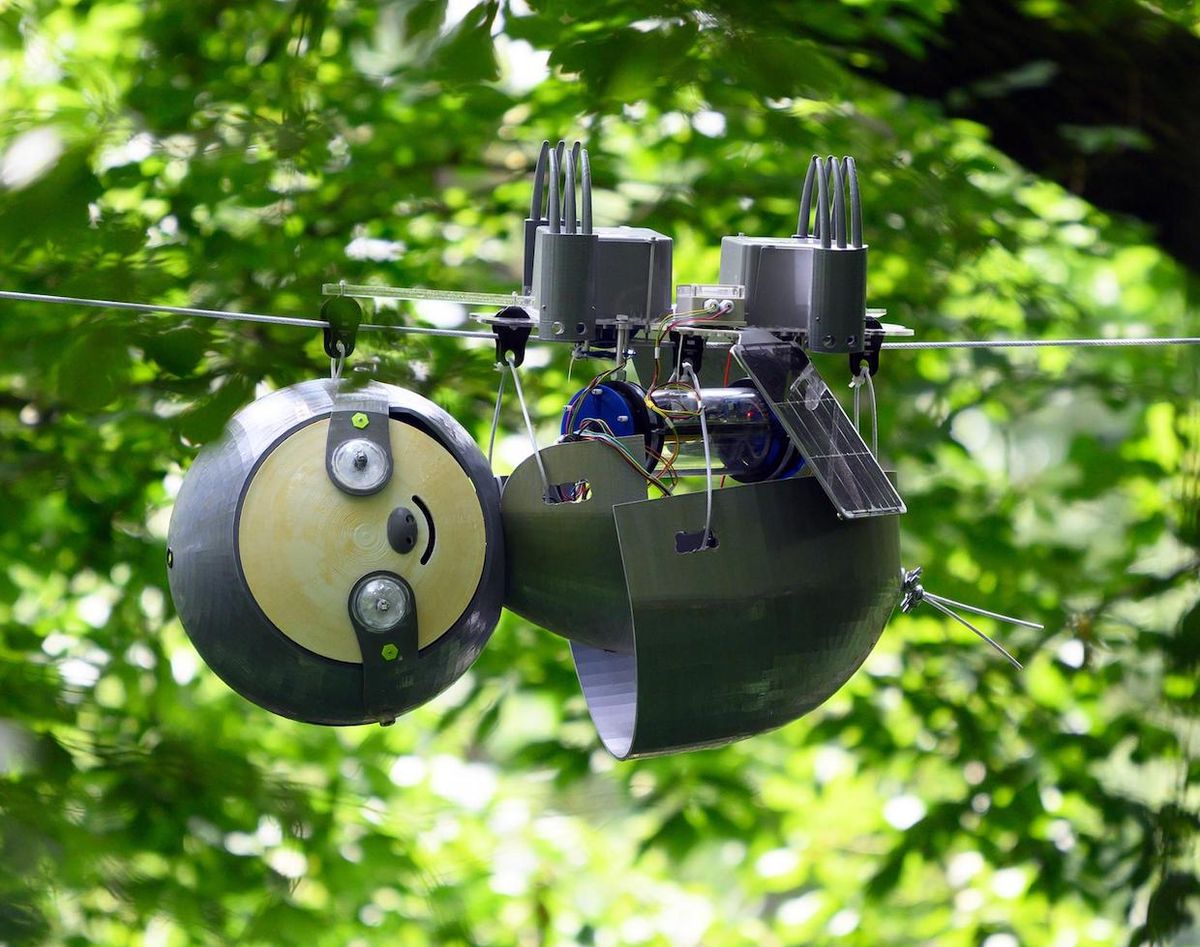An inherent characteristic of a robot (I would argue) is embodied motion. We tend to focus on motion rather a lot with robots, and the most dynamic robots get the most attention. This isn’t to say that highly dynamic robots don’t deserve our attention, but there are other robotic philosophies that, while perhaps less visually exciting, are equally valuable under the right circumstances. Magnus Egerstedt, a robotics professor at Georgia Tech, was inspired by some sloths he met in Costa Rica to explore the idea of “slowness as a design paradigm” through an arboreal robot called SlothBot.
Since the robot moves so slowly, why use a robot at all? It may be very energy-efficient, but it’s definitely not more energy efficient than a static sensing system that’s just bolted to a tree or whatever. The robot moves, of course, but it’s also going to be much more expensive (and likely much less reliable) than a handful of static sensors that could cover a similar area. The problem with static sensors, though, is that they’re constrained by power availability, and in environments like under a dense tree canopy, you’re not going to be able to augment their lifetime with solar panels. If your goal is a long-duration study of a small area (over weeks or months or more), SlothBot is uniquely useful in this context because it can crawl out from beneath a tree to find some sun to recharge itself, sunbathe for a while, and then crawl right back again to resume collecting data.
SlothBot is such an interesting concept that we had to check in with Egerstedt with a few more questions.
IEEE Spectrum: Tell us what you find so amazing about sloths!
Magnus Egerstedt: Apart from being kind of cute, the amazing thing about sloths is that they have carved out a successful ecological niche for themselves where being slow is not only acceptable but actually beneficial. Despite their pretty extreme low-energy lifestyle, they exhibit a number of interesting and sometimes outright strange behaviors. And, behaviors having to do with territoriality, foraging, or mating look rather different when you are that slow.
Are you leveraging the slothiness of the design for this robot somehow?
Sadly, the sloth design serves no technical purpose. But we are also viewing the SlothBot as an outreach platform to get kids excited about robotics and/or conservation biology. And having the robot look like a sloth certainly cannot hurt.
Can you talk more about slowness as a design paradigm?
The SlothBot is part of a broader design philosophy that I have started calling “Robot Ecology.” In ecology, the connections between individuals and their environments/habitats play a central role. And the same should hold true in robotics. The robot design must be understood in the environmental context in which it is to be deployed. And, if your task is to be present in a slowly varying environment over a long time scale, being slow seems like the right way to go. Slowness is ideal for use cases that require a long-term, persistent presence in an environment, like for monitoring tasks, where the environment itself is slowly varying. I can imagine slow robots being out on farm fields for entire growing cycles, or suspended on the ocean floor keeping track of pollutants or temperature variations.
How do sloths inspire SlothBot’s functionality?
Its motions are governed by what we call survival constraints. These constraints ensure that the SlothBot is always able to get to a sunny spot to recharge. The actual performance objective that we have given to the robot is to minimize energy consumption, i.e., to simply do nothing subject to the survival constraints. The majority of the time, the robot simply sits there under the trees, measuring various things, seemingly doing absolutely nothing and being rather sloth-like. Whenever the SlothBot does move, it does not move according to some fixed schedule. Instead, it moves because it has to in order to “survive.”
How would you like to improve SlothBot?
I have a few directions I would like to take the SlothBot. One is to make the sensor suites richer to make sure that it can become a versatile and useful science instrument. Another direction involves miniaturization - I would love to see a bunch of small SlothBots “living” among the trees somewhere in a rainforest for years, providing real-time data as to what is happening to the ecosystem.
Evan Ackerman is a senior editor at IEEE Spectrum. Since 2007, he has written over 6,000 articles on robotics and technology. He has a degree in Martian geology and is excellent at playing bagpipes.



